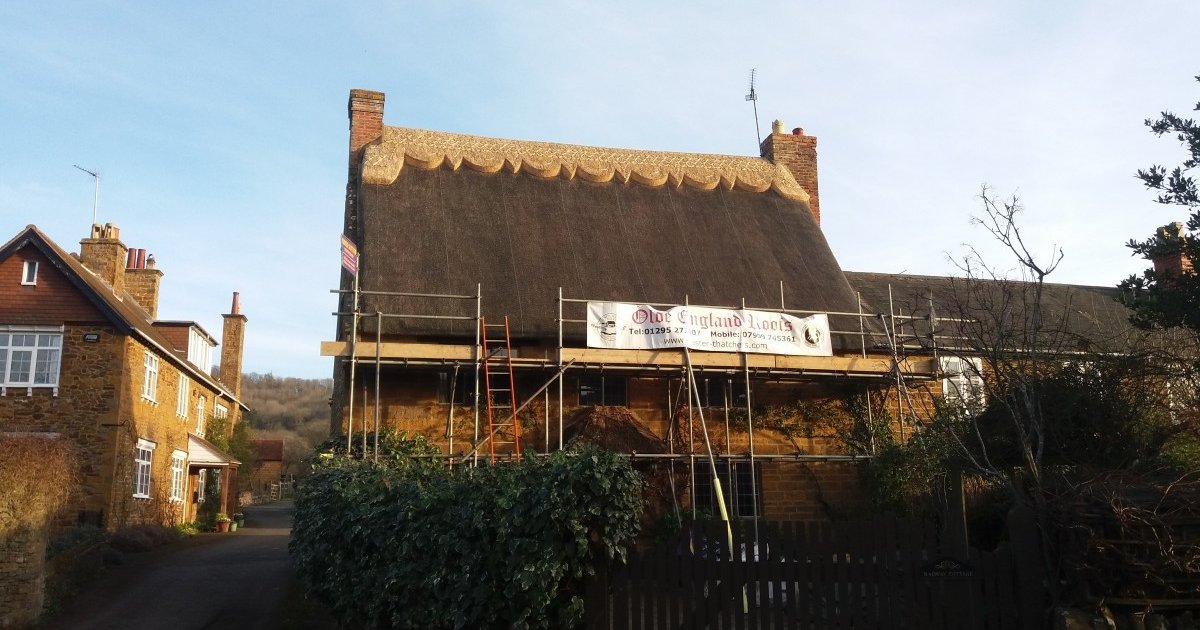There are three main types of thatch. Each one varies in style, appearance, the way they are applied and life span. The three types are:
Wheat reed
Wheat reed is known as combed wheat reed or wheat straw. Before the reed gets to your roof its cut with traditional binders and stooked to dry for 10-20 days. Then the reed is passed through a reed comber which removes all the grains, leaves and weeds the reed is then ready to be bundled through a trusser. We receive all of our wheat reed directly from an English wheat reed Farmer.
Wheat reed roofs will have a more rounded appearance compared to water reed jobs. This is due to the way that the reed is applied. The roof would be stripped down to a base layer of 8 -10 inches and the eaves and gables will be replaced with an overhang of no less than 12 inches.
Wheat reed will have a life span of around 25-30 years and will require a new ridge every 12 -15 years.
Water reed
Water reed, commonly known as Norfolk reed is grown in reed beds around rivers. This is the longest lasting type of reed to use, as it has a lifespan of up to 50-60 years if applied correctly.
It is on average 4 -6 foot in length and is more coarse and hard wearing then wheat reed. A Water reed coat will have a more distinctive and angular finish with straight eaves and gables.
All water reed properties will have a ridge thatched with wheat reed or sometimes sedge grass. So will require a new ridge every 12-15 years.
Long Straw
Unlike wheat or water reed, Long straw will have a more rustic look because the reed is applied with the ears and butts exposed.
Long straw roofs are recognizable because they will have a distinctive boarder along the eaves and gables.
This type of reed has the shortest life expectancy of only 15-25 years.
Ridges
The ridge is the finish over the top of the A-pex of the roof. This finish can be applied in two styles.
A Flush ridge which blends into the coat work of the property and is fixed with decorative pattern work.
The second style is an ornamental block ridge, which is raised from the coat work. This will have a distinct pattern which we ask the customer to decide on a style for.
Most ridges on thatched properties are completed with wheat reed and occasionally sedge grass.

